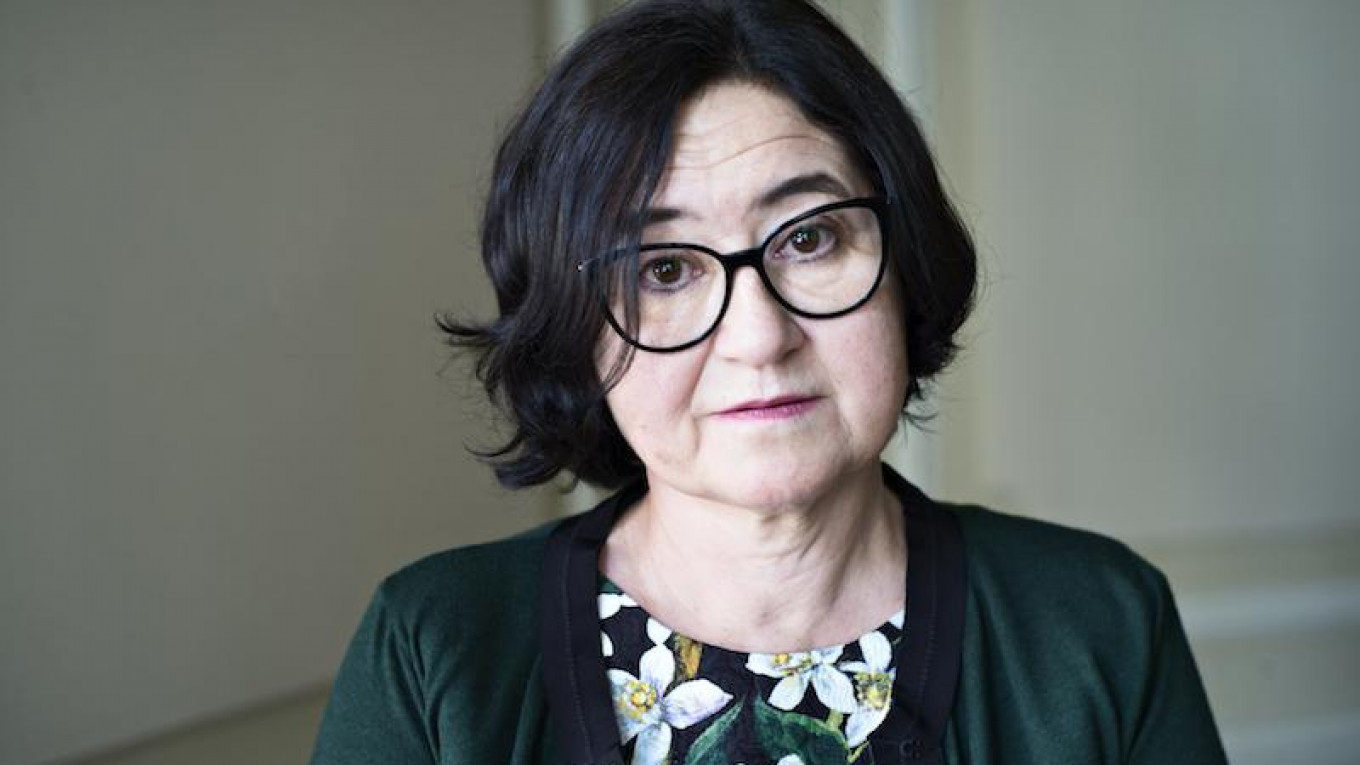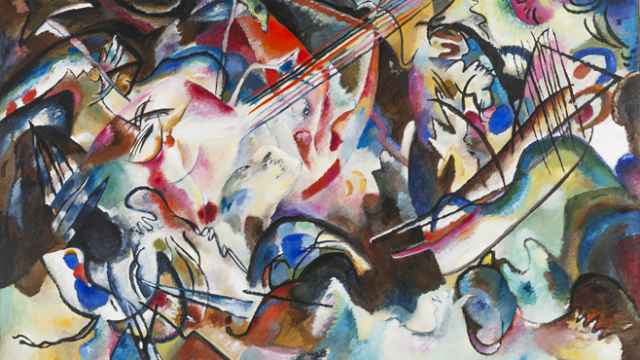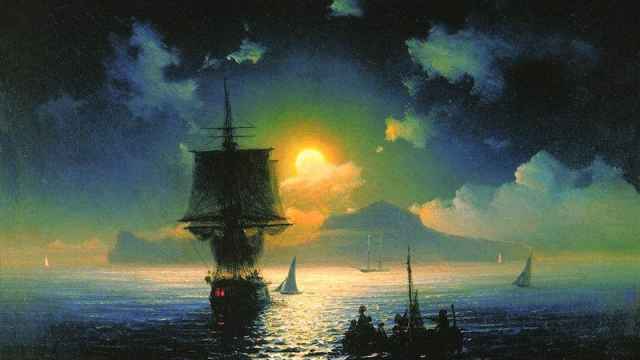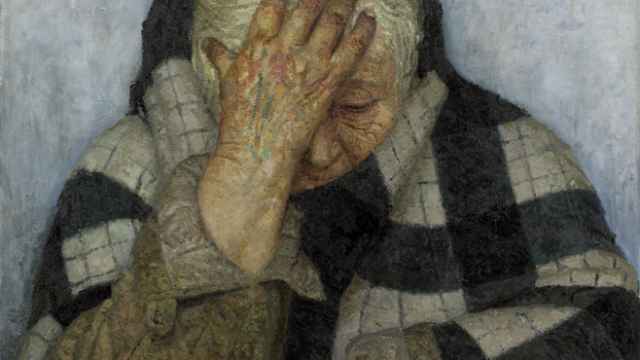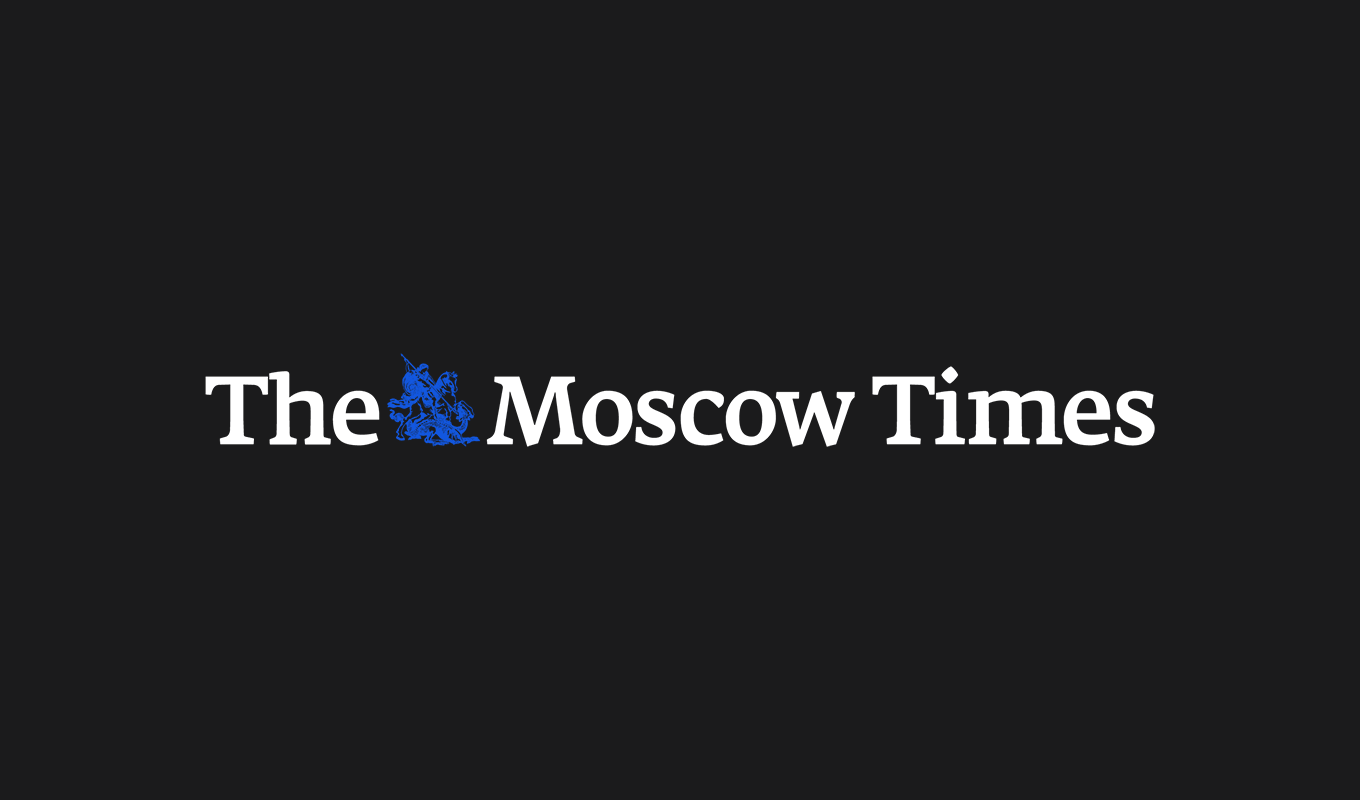People waited in line for up to four hours in temperatures of minus 20 degrees Celsius. There were ambulances and rescue workers on hand, just in case. Volunteers handed out porridge cooked up in nearby field kitchens. Alexei Ananyev, a billionaire whom Forbes lists as one of the 10 wealthiest people in Russia, stood without bodyguards alongside Anton Belov, the director of the Garage Museum of Modern Art, a nearby complex built with money donated by another billionaire, Roman Abramovich. This spectacular crowd was waiting to enter the Tretyakov Gallery on Krymsky Val, where the overenthusiastic mob had already broken the front door.
It was January 2016, and the newly appointed director of the Tretyakov Gallery, Zelfira Tregulova, was watching with surprise. The show was an obvious success — for her and for Valentin Serov, the portrait artist of the late tsarist period. However, even Tregulova had never imagined that displaying Serov’s well-known “Girl with Peaches” and “Ida Rubinstein” would draw so many visitors to the museum.
Tregulova was made director of the Tretyakov Gallery in 2015. Within a year, the expression “the line for Serov” had become a cultural meme in Russia.
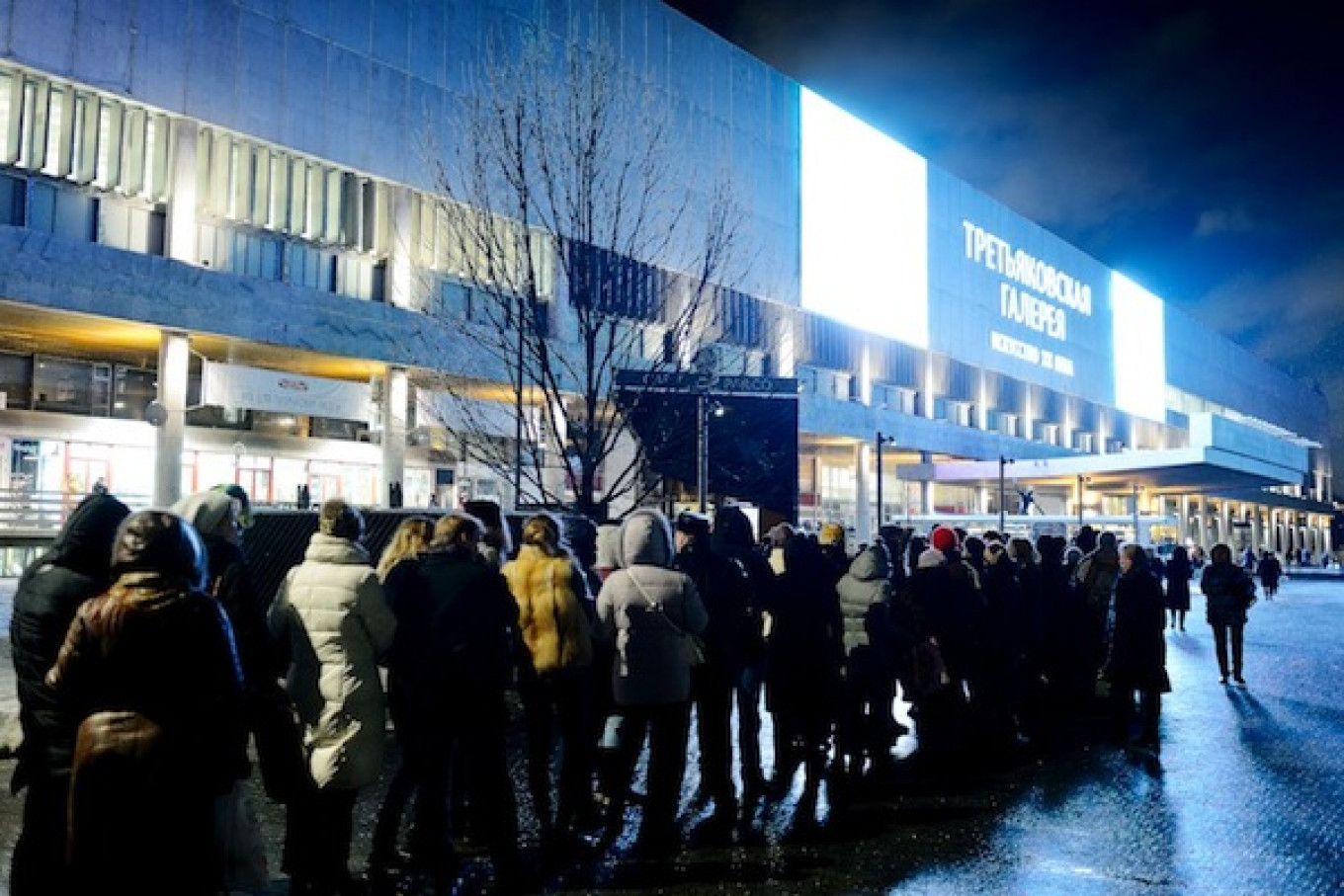
The government evaluates the work of state museums based on attendance: long lines equal success, and no lines are tantamount to failure. When attendance is high, museums get more government funding, not to mention a benevolent smile from Culture Minister Vladimir Medinsky.
Rescuing the Tretyakov
The Tretyakov Gallery, the world’s largest museum of Russian art, grew from the private collection of the merchant Pavel Tretyakov. Until recently, it had failed to attract visitors the way the Hermitage and Pushkin Museum do with their popular foreign exhibitions.
“We were getting 232,000 visitors a year at the Krymsky Val,” says Tregulova. “Of course, the permanent exhibition in the building on Lavrushinsky Pereulok and the exhibitions that the gallery organized in its building on Krymsky Val were excellent projects. But what is 232,000 visitors for a building of 44,000 square meters? By comparison: 235,000 people have visited in the 39 days since the [Ivan] Aivazovsky exhibition opened. That’s approximately as many as visited in all of 2014,” she says.
So what has made this museum of Russian art a sudden blockbuster? The droves of people now visiting say they love “beauty” above all else, gushing about the salon painters of the 19th century, like the seascape painter Aivazovsky, and 20th-century artists like Vasily Surikov, whose work often depicted historical scenes.
Works like these were also in high demand a decade ago, when the Russian art market ballooned, and staff at the Tretyakov earned money on the side, working as private consultants.
It is customary to speak condescendingly about the tastes of Russian audiences. After all, the argument goes, all of those artists learned their craft from grade-school textbooks, and the old Russian masters merely emulated the European innovators.
But Tregulova decided to combat professional snobbery. Like a Hollywood director fighting for an Oscar, she works to bring together collections of Russian classics, promoting each museum project with a teaser exhibit, like the “Girl with Peaches” by Serov or “Oil Workers” by Tahir Salakhov.
It was this approach that brought the Internet-savvy public into the museum’s nearly empty halls. Under Tregulova, even a showing of the painting “Black Square” by Kazimir Malevich revealed something new and unexpected. Restorers discovered that under the layers of paint lay the original title of the painting: “Battle of Negroes in a Dark Cave.” The discovery made headlines around the world.
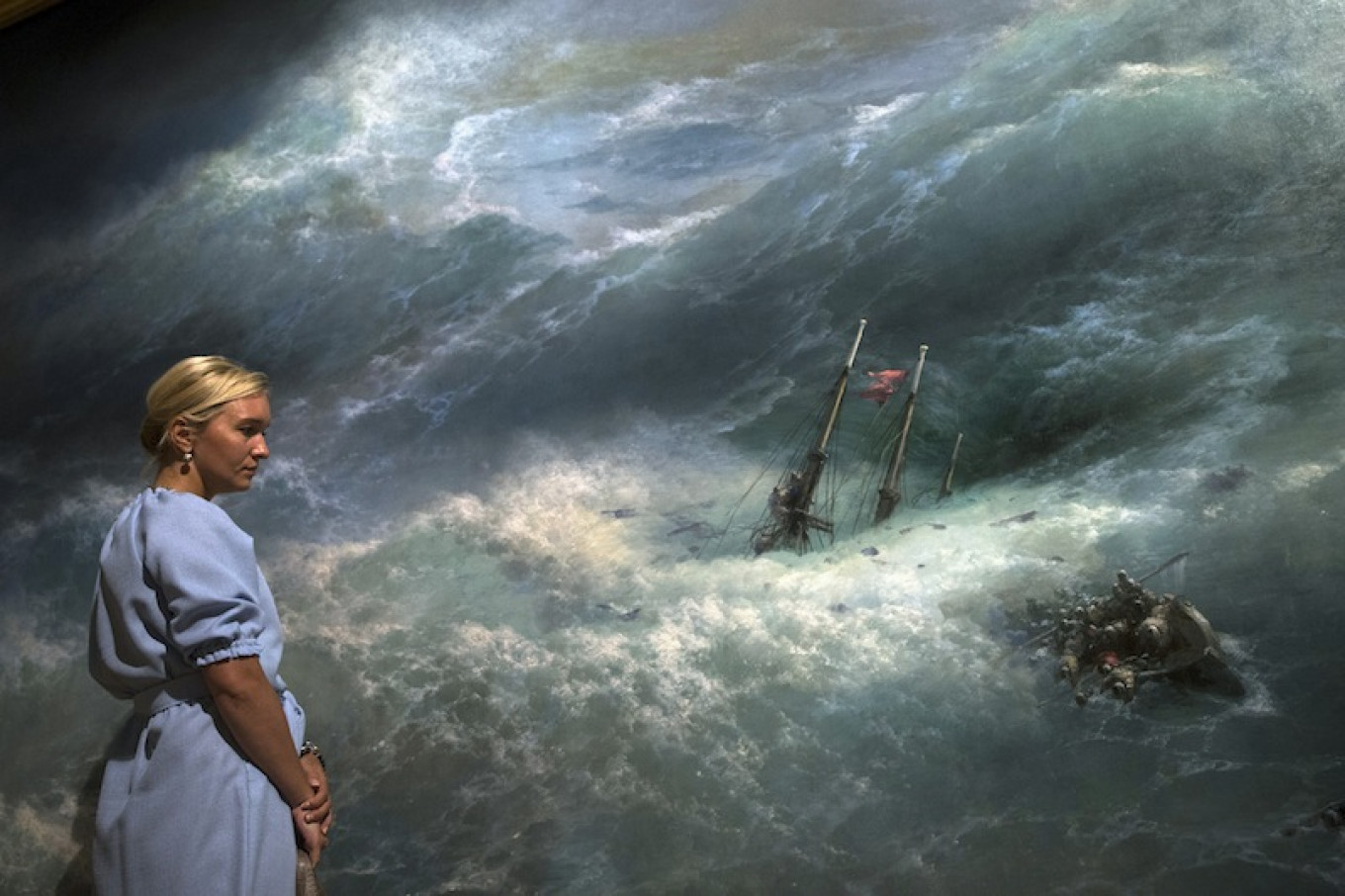
Experimenting Forward
Hosting major exhibitions of old masters gives the Tretyakov a certain freedom to experiment with new ones. For example, next year the museum will feature an exhibit titled “Thaw.” Who would have thought that the title of an exhibition of artworks created in the 1960s would, 50 years later, sound the least bit provocative?
“I think people today should take a good look at that era and realize that it was really a renaissance, and at the same time an incredible upsurge and flourishing in all fields of artistic activity,” says Tregulova. “It was a new and incredible sense of inner freedom and individual values, feelings and thoughts. It was a turning point in collective consciousness. This was the main revolution of the time. As proof, consider the exhibition that opened at the Victoria and Albert Museum entitled ‘You Say You Want a Revolution.’ The working title of our exhibition is ‘Thaw: Cultural Revolution or The Search for Happiness.’”
Tregulova is legendary for her diplomatic skills, without which it’s difficult to imagine how she — a woman who has worked in the United States — could be appointed to serve as the director of a national art gallery, instead of being treated like a foreign agent.
She trained for more than a year at the Solomon R. Guggenheim Foundation, where, as curator, she implemented a project introducing the world to Russian art.
In 2003, Tregulova organized an exhibition in Germany of formerly banned totalitarian Soviet art from the 1930s, titled “Dream Factory Communism.” These were pictures that did their utmost to promote Stalin’s personality cult. The Soviet Union never once displayed these images after the Communist Party’s 20th Congress in 1956.
Tregulova also organized the “Russia” exhibition at the Guggenheim Museum that covered the full range of Russian art — it broke the museum’s attendance records from 2005 through 2013.
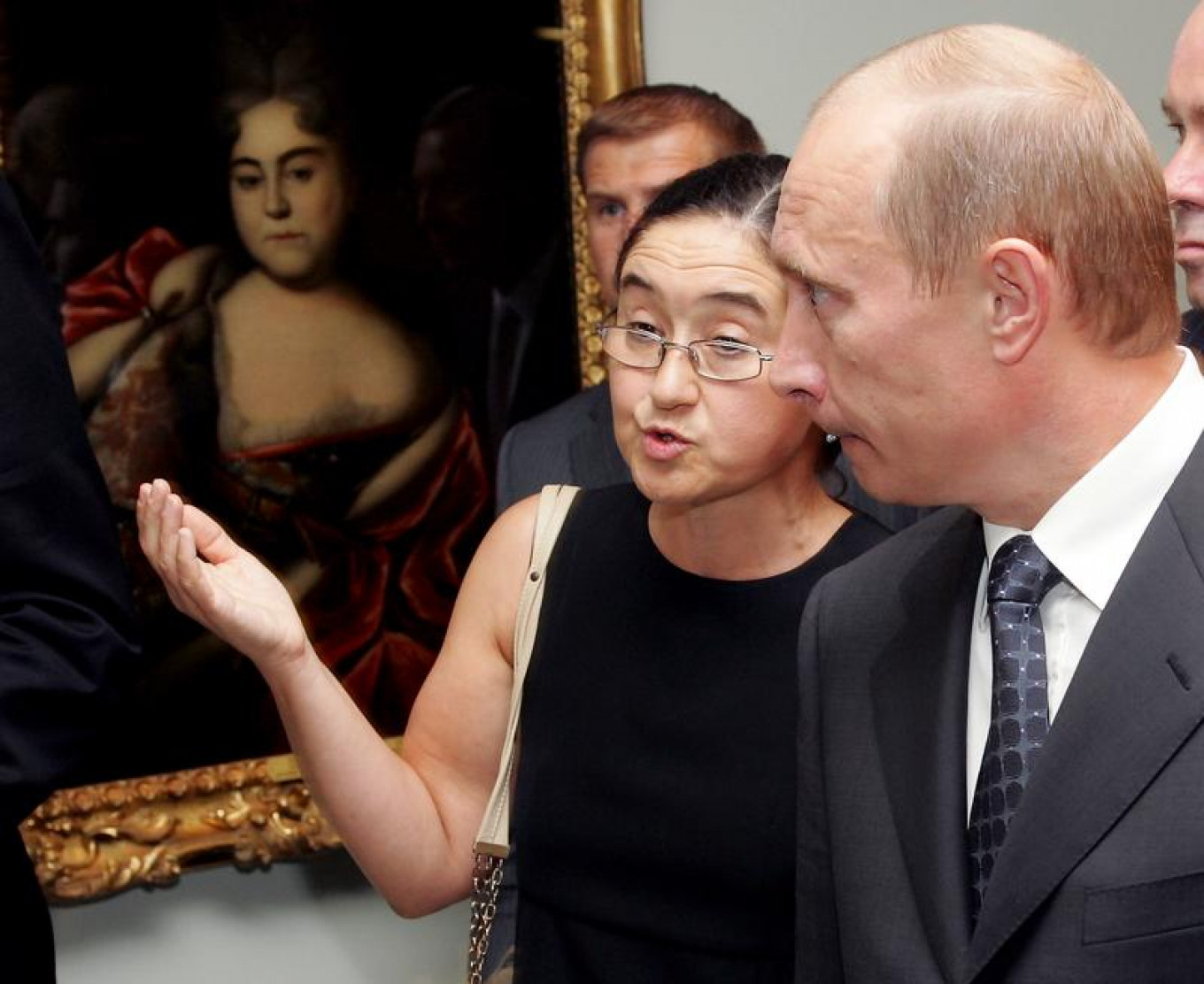
Having already introduced the world to Russian art, today she is reintroducing Russians to their own artists. Even President Vladimir Putin has expressed an interest in the long lines leading into the Tretyakov.
“There’s no point in setting up the museum as an ivory tower,” says Tregulova. “For example, many government officials have visited the museum lately — 20 deputy ministers came to the Aivazovsky exhibition in a single week. That’s very good, because when we pay a visit to those people later, they will have an understanding of what we’re talking about because they have seen 6,000 visitors at the museum with their own eyes.”
In Soviet times, the authorities appointed business-minded “red directors” to run the museums. One such individual, the former Moscow region chief architect Valentin Rodionov, served as penultimate director to Tregulova. His task was simply to restore the building on Lavrushinsky Pereulok.
Rodionov was at the helm in 1996 when the state ran out of money and failed to deliver 25 billion rubles of promised funding. In October that year, when the museum was unable to pay its bills, the authorities shut off its electricity, heating and communication lines. The art collections went unprotected for a full day as museum guards staged a strike over wage arrears. Officials considered closing the gallery temporarily and sending workers home on unpaid leave.
Tregulova must now rebuild the museum as the country endures another economic crisis. Her only real fear is this potential lack of funding.
“While working on such exhibitions as ‘The Great Utopia’ in 1991-1992, I also had to find a way to supply fuel for the trucks carrying the exhibition’s loans. I don’t mind getting my hands dirty. And, of course, my time working at the Kremlin Museum [in 2002-2013] also helped. While I was deputy director for exhibitions at the Kremlin Museum, we had two incredible projects: the restoration of the Ivan the Great Bell Tower and the restoration of the Cathedral of the Annunciation. I carefully observed how that whole process moved along,” she says.
The Tretyakov Gallery plans not only to construct a new building and renovate the old one, but also to begin exhibiting foreign artwork in addition to Russian work. An exhibition of masterpieces from the Vatican is set to open soon. Next year, a showing of works by Edvard Munch will make its first appearance. Tregulova also intends to introduce little-known Russian artists to the Western world, and is already in discussions for an exhibition devoted exclusively to the works of Ilya Repin. Soon after that, it will be Serov’s turn.
“When Diaghilev staged a huge exhibition of Russian artists as part of his fall salon in 1906, [Mikhail] Vrubel was very much in vogue, and witnesses reported several times seeing Pablo Picasso in the galleries where Vrubel’s works were hung. Serov was nowhere near as popular, and that whole situation was a disturbing drama for him. Just imagine,” Tregulova says, “his works attracted very little attention.”
“When some people hear where I work,” Tregulova says, “they tell me they’ve never set foot in a museum in their lives. At the same time, a colleague told me a remarkable story about a tow-truck driver who came for her stalled vehicle, and upon learning that she worked at the Tretyakov, suggested that Aivazovsky was a Russian version of the English painter J.M.W. Turner.
Soon, the two began seriously discussing whether Turner and Aivazovsky had ever met. That’s art for the masses.”
Anna Mongayt is creative producer at Dozhd TV.
A Message from The Moscow Times:
Dear readers,
We are facing unprecedented challenges. Russia's Prosecutor General's Office has designated The Moscow Times as an "undesirable" organization, criminalizing our work and putting our staff at risk of prosecution. This follows our earlier unjust labeling as a "foreign agent."
These actions are direct attempts to silence independent journalism in Russia. The authorities claim our work "discredits the decisions of the Russian leadership." We see things differently: we strive to provide accurate, unbiased reporting on Russia.
We, the journalists of The Moscow Times, refuse to be silenced. But to continue our work, we need your help.
Your support, no matter how small, makes a world of difference. If you can, please support us monthly starting from just $2. It's quick to set up, and every contribution makes a significant impact.
By supporting The Moscow Times, you're defending open, independent journalism in the face of repression. Thank you for standing with us.
Remind me later.


